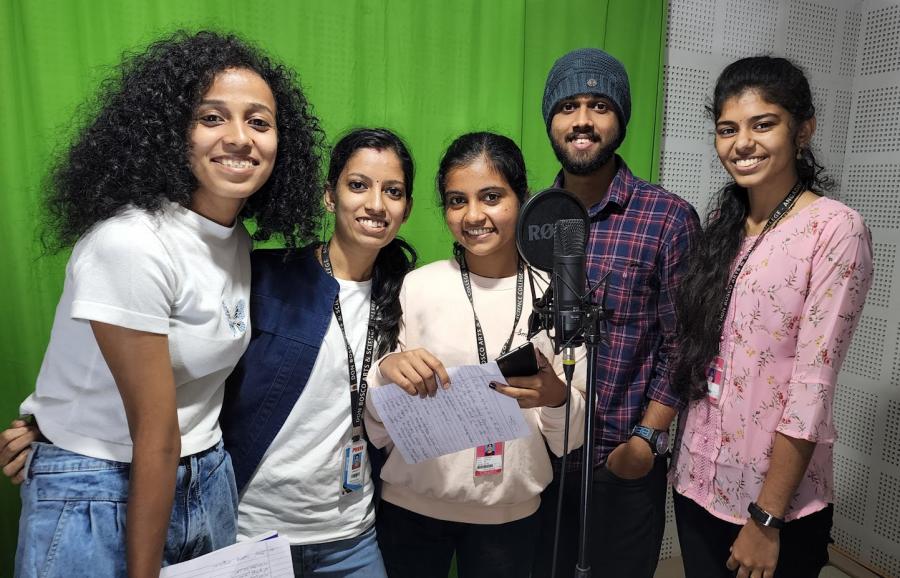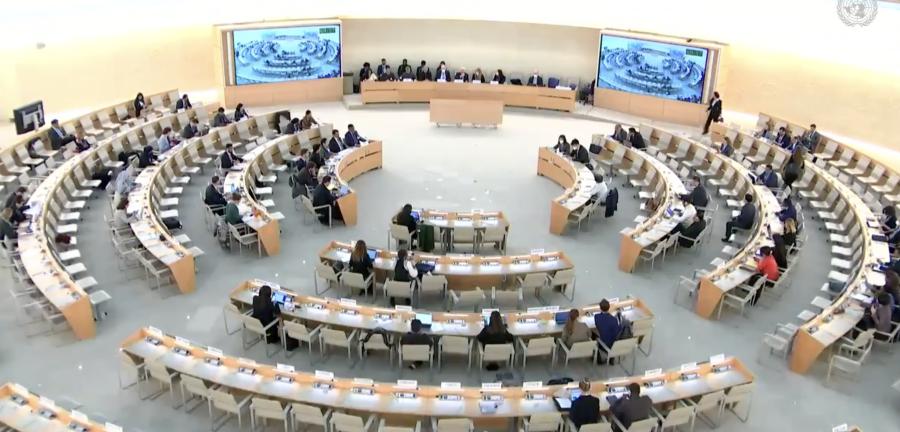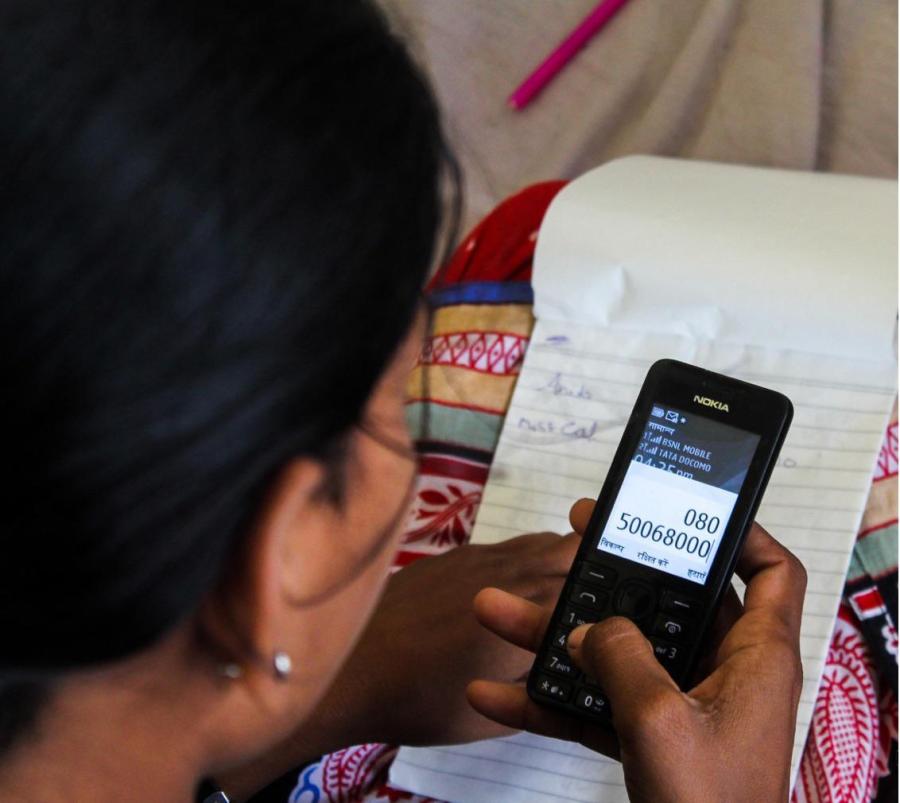Imagine a country which has 18 officially-recognized languages and a total of 1652 mother tongues in a country nearly a billion strong and spread over an area of 3.2 million square kilometers -- that's India.
Given its diversity and expanse, one could well understand the problems that tribal, under-privileged, or minority cultures face in getting their voices heard.
As far as the radio is concerned, long years of official domination by the government, outdated, but existing British regulations, and the rampant commercialization of the airwaves have complicated the problem. Citizens groups and non-profit organizations in India are pushing for a wider representation on the centralized and hierarchical Indian radio network -- with some success. Court rulings have recently favored the establishment of new, local stations and campaigners from across India are underlining the importance of radio in shaping the destiny of Indian society For decades, India's radio stations have been centralized, unable to cater to the regional diversity of India, and lacking editorial independence. Now, citizens' groups are pressuring the government for a community radio model.
Call it by any name -- community radio, rural radio, cooperative radio, or development radio -- its proponents feel that radio holds the key that will unite India's linguistic and ethnic diversity and improve the economic disparity and the huge rural-urban divide. "Imagine having your own radio station where you can walk in any time to ask for your favorite music, share some important local event or chat with your neighbor who's now become a celebrity," says media advocacy campaigner Ms. Sucharita S. Eashwar from Bangalore, the capital of the Indian federal state.
Decentralizing Indian Radio
Ms. Eashwar leads a non-profit development communication group called VOICES that has lobbied to start community radio in India. Based on the current debate in the national media, interested parties feel India has only developed its urban commercial broadcast facilities while ignoring its public service, community, educational, and developmental broadcast networks. Indian non-profit groups are looking to the more vibrant community radio models like those in nearby Sri Lanka, the Philippines, and other African or Latin American countries.
Media advocacy groups have been pressing policy and decision makers in New Dehli to give broadcasting licenses to universities (particularly agricultural universities, medical institutions, adult and legal literacy organizations), registered cooperatives, women's cooperatives, and suitable public bodies. "Our problem has been a `Delhi-centric' approach to broadcasting that we, in this country, have taken. One fear is that [community broadcasting and grassroots radio] could become inconvenient for the existing power-structure," says prominent media critic Professor K.E. Eapen of Bangalore.
In India, radio is shifting from being a government monopoly to a highly-commercialized broadcasting service. Media advocacy groups say the media needs to be "democratized" simultaneously as it moves away from official control. Privatization and total deregulation is not enough if the media becomes irrelevant to the vast majority of Indians. Now, while the policies are being developed, is the time for non-profit groups, educational and research institutions, cooperatives, women's groups, and development organizations to seize the available opportunities created by liberalizing the electronic media.
In September, 1996, in Banglore, VOICES brought together a group of radio broadcasters, policy planners, media professionals, and non-profit groups to study how community radio could be relevant to India and what policies were needed. Initially, one suggestion was that the approximately 76 local radio stations that make up the staterun monopoly, All India Radio, could allocate an hour of air time each day to community broadcasting. The Banglore Declaration for a Media Policy on Community Radio was released at the end of the meeting and aimed to shape media policies in India.
Meanwhile, several non-profit organizations have written to the Information and Broadcasting Ministry showing an interest in establishing low-cost local radio broadcasting facilities to support their community development work. Problems remain since cheap FM receiver sets are not easily available, especially in rural areas.
An official of the state-run Bharat Electronics Limited, Mr. Rajamani, points out that low-cost radio stations are becoming affordable in India too. One low-cost station with a transmitting power of up to 50W that reaches a target audience of 5-10 square kilometers would cost between Rs 1 to 1.2 million (almost US$ .5 million). Basic equipment for recording, mixing, editing, and a 20-feet high antenna would cost a little more.
Radio has already proven its relevance to Indians. Recent government studies suggest that radio in India could potentially reach up to 98.5% of the population. There are approximately 104 million homes that have radio-nearly double the number of homes that have TV. "Over the last decade, All India Radio has focused more on the rural population and the urban lower middle classes, unlike [TV'S] preoccupation with the urban upper middle classes," Ms. Eashwar says. India's population is overwhelmingly poor and over one-third of the population lives below the official poverty line, the equivalent of US$300 a year!
India's Broadcasting Policies
In a recent ruling, India's Supreme Court declared the airwaves public property to be used for promoting public good and ventilating plurality of views, opinions, and ideas. In the context of delivering its crucial 1995 judgment, the Supreme Court of India looked closely at the evolution of the broadcast laws in Europe and the U.S. and stated "Use of the airwaves, which is public property, must be regulated for its optimum use for public good for the greatest number. The rights of the listeners and viewers, and not of the broadcaster, is paramount." The court felt that monopolies in broadcasting -- either by the government, an individual, or organization -- was unacceptable.
Oddly, there were no special laws to govern broadcasting in India except the Indian Telegraph Act, a British colonial legislation that dated back to 1885. This law scarcely fit the purpose, since it was developed before the radio was even invented. "Centralized, one-way broadcasting...has a limited scope to serve the goals of development, especially in the context of pluralism and diversity which is a singular characteristic of Indian society," read the Bangalore Declaration on Radio.
India has been poised on the brink of broadcasting autonomy for at least three decades. Yet, media policy and implementation continue to remain in the hands of the government. Because of this, Indian radio has grown impressively, but has remained inaccessible to large groups of nonaffluent segments of the population, despite sporadic efforts at innovation. India has been unable to chart out a well-formulated communication strategy to support broadcasting development and there have been lopsided priorities while defining the state's role in the media. Recent economic policy changes in India introduced foreign technology, capital, and the advent of satellite television. This has reoriented broadcasting towards commercialization and the formerly powerful All India Radio has been relegated to a distant second place.
Recently, India has been making efforts to revamp its age-old broadcasting laws. But shaping a new broadcasting policy is turning into a tough job. For the last five years, there has been a hotly argued debate over the social, political, and cultural impact of the electronic media in India. "We have an impressive [radio] infrastructure -- one of the best in the world -- with broadcasting content that is of limited interest for its listeners," commented journalist Kalpana Sharma in national newspaper The Hindu. She blamed government's domination of radio for this.
Examples Across the Border
Meanwhile, broadcasting lessons are being learned from some of India's neighbors. Tiny landlocked Nepal, the Himalayan country that is home to some of the world's highest peaks, is showing the way to south Asia by setting up its first community radio station. Official restrictions have not hindered the arrival of Radio Sagarmatha, the first non-governmental FM station in Nepal. It broadcasts from a transmitter set up by non-governmental organizations (NGOs) with support from the United Nations.
Over the past few months, this station has been filling the airwaves of capital Kathmandu with the sound of long forgotten Nepali folk music mixed with `development messages.' Sagarmatha, literally meaning the `forehead of the ocean' is the Nepali name for Mount Everest. The Nepal Forum of Environmental Journalists (NEFEJ), headed this project and is planning to develop Radio Sagarmatha as a prototype station and training and resource center that will expand radio into the rural areas of Nepal. "Our long term objective is to encourage dozens or more of small stations throughout the Himalayan country," said NEFEJ executive director Om Khadka.
Radio Sagarmatha launched its own test transmissions in early June after getting a license from the Nepali government-a herculean effort. Over a dozen other applications are believed to be pending with the Ministry of Communication and Information in this Himalayan kingdom, but analysts in Kathmandu feel it is unlikely that there will be more private radio stations because of the enormous bureaucratic obstacles one must overcome.
Presently, Nepal only has two FM stations both operating from Kathmandu. Radio Sagarmatha's 500 watt transmitter has just joined the government-run FM station in Kathmandu. Both stations cover the Kathmandu Valley, an area of around 400 square kilometers.
Radio Sagarmatha is an unusual experiment in other ways. Some of the country's best known media organizations, the Nepal Forum for Environmental Journalists (NEFEJ), the Nepal Press Institute, publishers of Himal magazine, and Worldview Nepal (a media related organization), have taken a lead in establishing Radio Sagarmatha.
UN development statistics say 75% of Nepalis live below the poverty line. Average life expectancy is 55 years. One in every 10 infants dies before the age of five, and 40% of Nepali children are undernourished. Environmental problems have been a concern in Nepal for quite some time. Some two-thirds of the country's rural population live in mountains and plateaus with only 30% of Nepal's arable land. Population pressures on the land in these rural areas have caused erosion and deforestation to reach alarming proportions. Low productivity, unemployment, and poverty are some of the concerns staring in the face of the country. Its backers hope that the Radio Sagarmatha experiment will boost pluralism in the broadcast media in the South Asian region, where the scene has largely been dominated by large, sometimes-monolith official organizations. India hopes to follow this example to improve the economic and social well-being of the country's rural inhabitants, as well as to improve the communication between these communities.
References
Mathew, K.M., ed. 1998. Manorama Yearbook 1998. Kottayam, India. pp. 459-460.
May 1996, India-1996: A Reference Annual. New Delhi: Ministry of Information and Broadcasting. p. 211.
Interview with Professor K.E. Eapen of Bangalore, June, July, 1997.
Interview with NEFEJ Executive Director Om Khadka, June, July, 1997.
Article copyright Cultural Survival, Inc.



